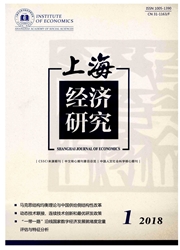

 中文摘要:
中文摘要:
本文在生命周期一持久收入模型与预防性储蓄理论的框架内,使用1997~2008年的省级面板数据,通过动态系统广义矩的估计方法对中国城镇居民储蓄率的影响因素进行了实证研究。研究显示:持久收入的增加和储蓄惯性显著提高了城镇居民的储蓄率,并且以上两方面因素可以对1997~2008年间城镇居民储蓄率增幅中的大部分进行解释;但与传统的LC—PIH模型不同,少儿抚养比与中国城镇居民储蓄率之间存在着显著的正相关关系。此外,社会保障事业的发展通过降低不确定性,从而显著降低了城镇居民储蓄率,而就业的市场化程度却产生了与之相反的影响。但公共支出的结构、通货膨胀率以及实际利率没有对城镇居民储蓄率产生显著的影响。
 英文摘要:
英文摘要:
This paper analyze the determinants of household saving rate in urban China in the framework of life cycle-permanent income model and precautionary saving theory, the empirical estimation through the dynamic GMM based on provincial panel data from 1997 to 2008 showed: increase in income and savings habits significantly improve the urban household saving rate, and the above two factors can interpret the most of the increase in urban household saving rate; but different form the traditional LC- PIH model, there is a significant positive correlation between child dependency ratio and savings rate in urban China; In addition, the development of social security significantly reduce the saving rate of urban residents, while employment market-oriented has generated the opposite effect. However, the structure of public spending, inflation and real interest rates did not have significant impact on saving rate in urban household.
 同期刊论文项目
同期刊论文项目
 同项目期刊论文
同项目期刊论文
 期刊信息
期刊信息
